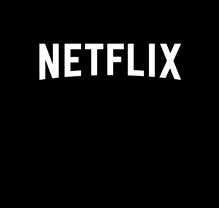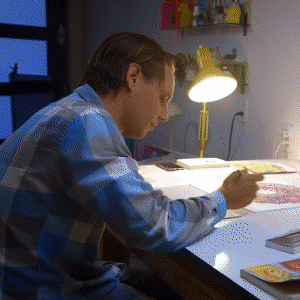The Antisocial Network
A Netflix Feature Documentary
Feature Film
The Antisocial Network
Role
Co-Director, Producer, Art Direction, GFX, Editing, Archival Research Producer


“A cautionary tale in the face of a better future”
Allegra Frank, The Daily Beast

The Antisocial Network, Trailer 2024
HACKERS, TROLLS & ANIME NERDS
4chan: The 21st Century’s most influential cultural institution
Arthur Jones, March 2024
The Antisocial Network is a sequel to Feels Good Man, my previous documentary. Both films explore the potency of memes and how extremist ideologies proliferate online. Feels Good Man was about one specific meme, Pepe the Frog, and how the users of the website 4chan, seized the character for their own purposes. But Pepe is just a tiny piece in the 4chan puzzle. The Antisocial Network tells the larger story of 4chan’s inception and impact, from the perspective of some of the teenagers who created it.
Most people understand 4chan to be the internet’s filthiest bathroom. It’s the website where school shooters post their manifestos and hackers dump the contents of Hunter Biden’s iCloud account. It’s where Jennifer Lawerence’s nudes leaked in 2011 and Jeffrey Epstein’s death was reported before it was made public in 2019. It’s fertile ground for racists, sexists and conspiracy theorists to meet up, workshop ideas and engineer new brainworms.
4chan launched in late 2003, a few months before Mark Zuckerberg started Facebook, a couple years after the dot-com bubble burst. Cyberspace had yet to be bulldozed by social media. Blogging sites like Livejournal and peer-to-peer sharing services like Limewire were connecting people all over the world in wild new ways. 4chan’s success was utterly organic, free of VC investment, techworld hype cycles or Ivy League business plans. It was a free and open place for the millennial generation to express themselves without rules, censorship or corporate supervision.
4chan’s founder was a 15-year-old named Christopher Poole who went by the handle “moot.” He was a smart kid with a dark sense of humor and a passion for Japanese pop culture. Straight away the site was popular but troubled. In its first year, 4chan crashed, was hacked, had its domain suspended and was flooded with child porn. The site was like a Pandora’s Box and moot inadvertently released a flood of digital excrement into the world. He had no way of knowing that over the next 20 years the website would drive some users insane, help elect a U.S. President, instigate cult-like behavior and inspire mass murder.
4chan’s foundational power was internet memes. Nowadays, memes are so ubiquitous that it’s hard to imagine online communication without them, but in 2003, 4chan set off a Cambrian explosion that created everything from Lolcats to Rick Rolling. Thanks to 4chan, image macros became THE method of online self expression. On 4chan, memes functioned as folklore. Their meaning constantly shifted and changed as they traveled from 4channer to 4channer at 600 kilobits per second.
On 4chan, most users posted anonymously. This meant they could hurl insults, crack mean-spirited jokes, make threats and share explicit images without repercussion. In this moral vacuum, there was no accountability – no way to understand if the person on the other side of the screen was offended, disturbed or delighted. Context was erased. Empathy abstracted. Communication didn’t necessitate genuine human interaction. This proved to be an intoxicating environment for socially awkward misfits and loners looking for self actualization.
Soon 4channers realized they could troll the same way they memed — collectively. In 2005, 4channers started to band together and harass agreed-upon targets like a swarm of locusts. Initially, they ganged up on multiplayer video games and rival websites but soon came to take on bigger targets like the Church of Scientology. These trolling campaigns were a new way to attack established institutions and manipulate the media. In 2007, 4chan spawned the leftist hacktivist group, Anonymous. Then later, as the site became more reactionary, stranger movements coalesced like Gamergate, Pizzagate and QAnon.
4chan’s slime saturates almost every corner of the internet and it has created the semiotic foundation for much of Gen Z “extremely online” culture. On platforms like Twitch, TikTok or Youtube, it’s common to see live streamers wearing cat ears or dressed as Japanese school girls using words like: based, rekt, fap, cringe, normie, doomer, and weeaboo. To outsiders, this is nonsense but it was all created or popularized on 4chan. It also forged a generation of red-pilled “groypers” who use sexually demeaning put-downs like cuck, pedo, groomer and soyboy to clog comment sections across social media.
So why is this website full of gibberish so potent?
“You’re sitting there staring at a bright screen in a dark room, losing sense of time. And you know, 4chan, it’ll break you down. It’ll kind of disorient you,” said a former 4channer who goes by Lil Internet and now hosts The New Models podcast. “It will challenge your taboos then force you into exercises in misanthropy or sociopathy. Then you have these destabilized people, and you can inject an ideology in them. It’s really similar to brainwashing.”
This “brainwashing” was what many 4channers experienced as the site radicalized in the 2010s. On 4chan, “edgelords” and “shitposters” turned first into nihilistic trolls and then into irony-poisoned, Trump-worshiping, Alt-Right fascists. It was evidence of the power of memes — which is why 4chan is so anthropologically significant. It created a dynamic new framework for users to interpret the world.
When you surf 4chan, you’re met with a disorienting jumble of memetic content: lurid images, off color jokes, hardcore porn, harder-core gore, cartoons and conspiracy theories. All these things vibrate against each other, vying for your attention. There is no thematic structure. No rationale. No reason. Just endless novelty. A million jigsaw pieces from a million puzzles.
Unlike reading a book or watching a TV program, it’s up to the user to sift through this data and make their own brain-tingling connections. Decoding the jumble is addictive. With each connection, there’s a tiny ecstatic spark, a dopamine spike. On 4chan, by design, users have to do their own research.
This phenomenon is called “narrative collapse.” It’s how something like QAnon happens. Gangs of disconnected users following memetic breadcrumbs create an aggregated derangement. Media Theorist Douglas Rushkoff, describes narrative collapse in his excellent book Present Shock: “Of course, once everyone is connected to everyone and everything else, nothing matters anymore…The ultimate complexity is just another entropy.”
History is made up of technology’s unintended consequences. What happened on 4chan is what happened to all of society when we disappeared into our screens. The more time we spend inside the doom scroll, the more we flirt with 4chan’s incremental madness.


